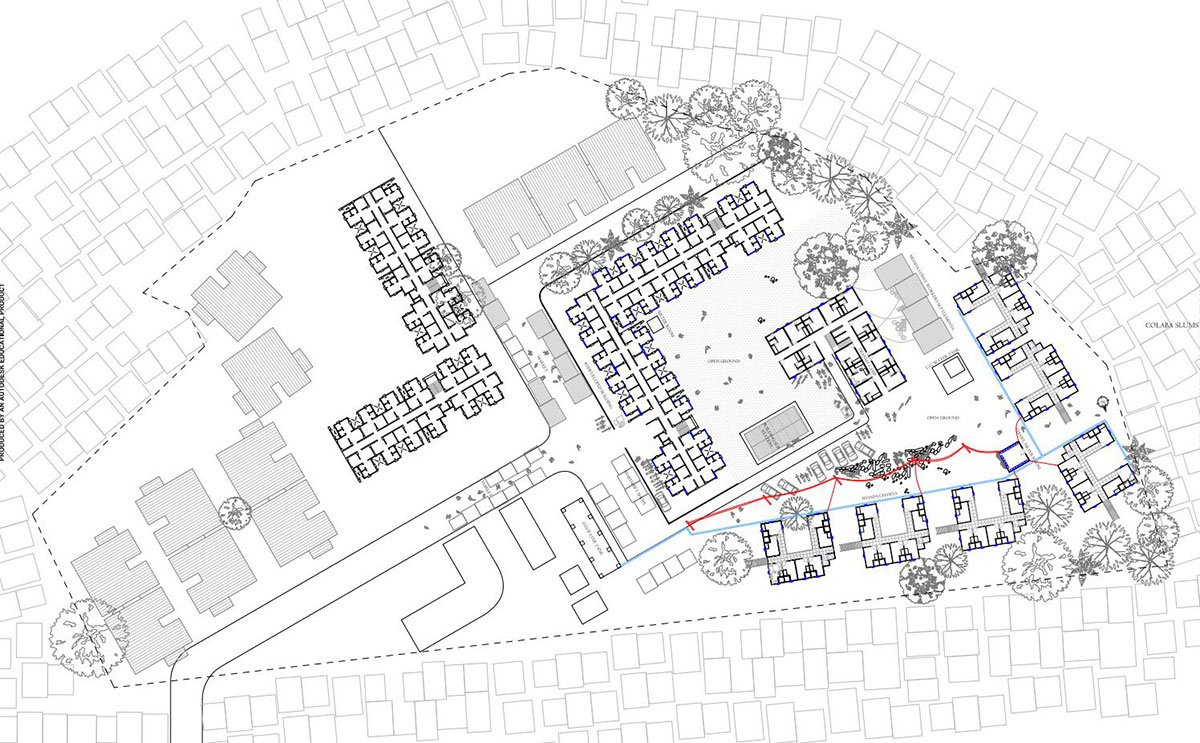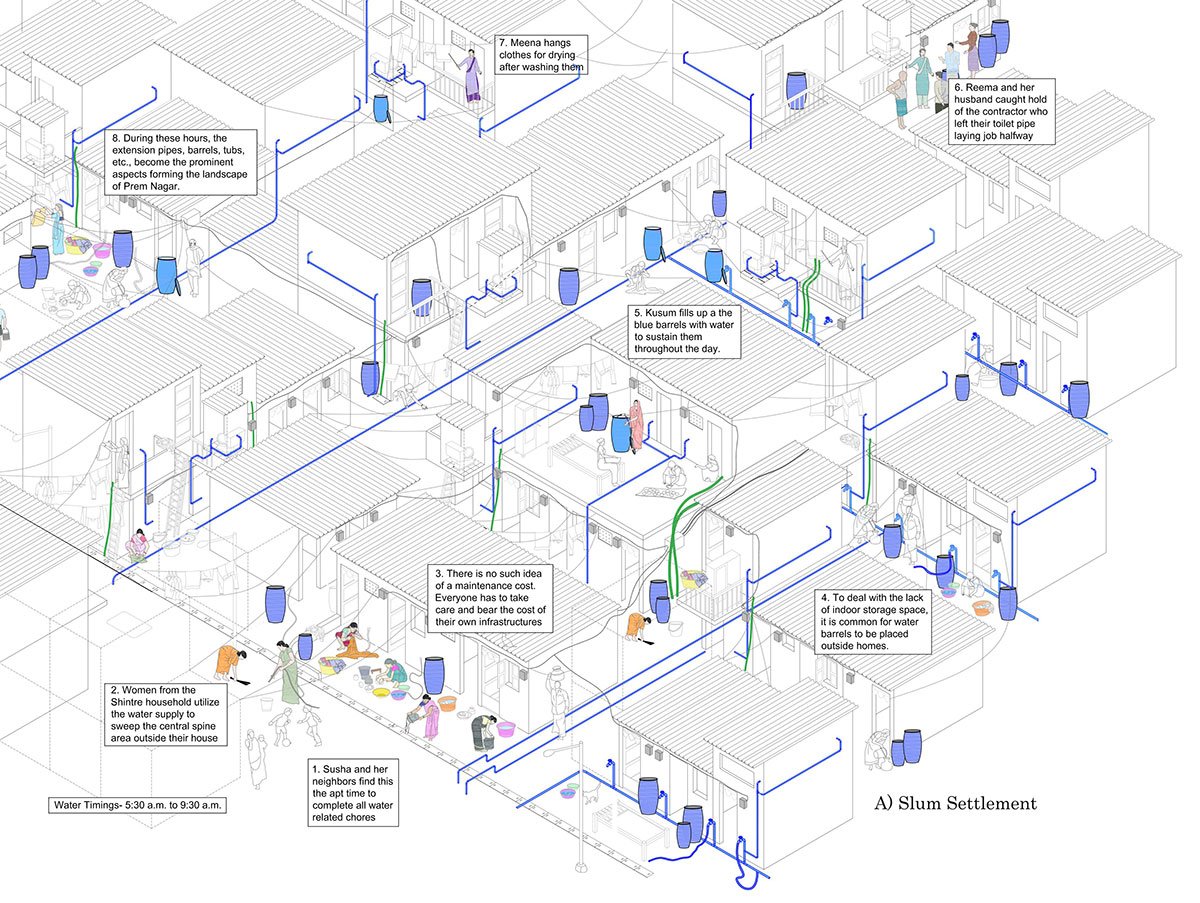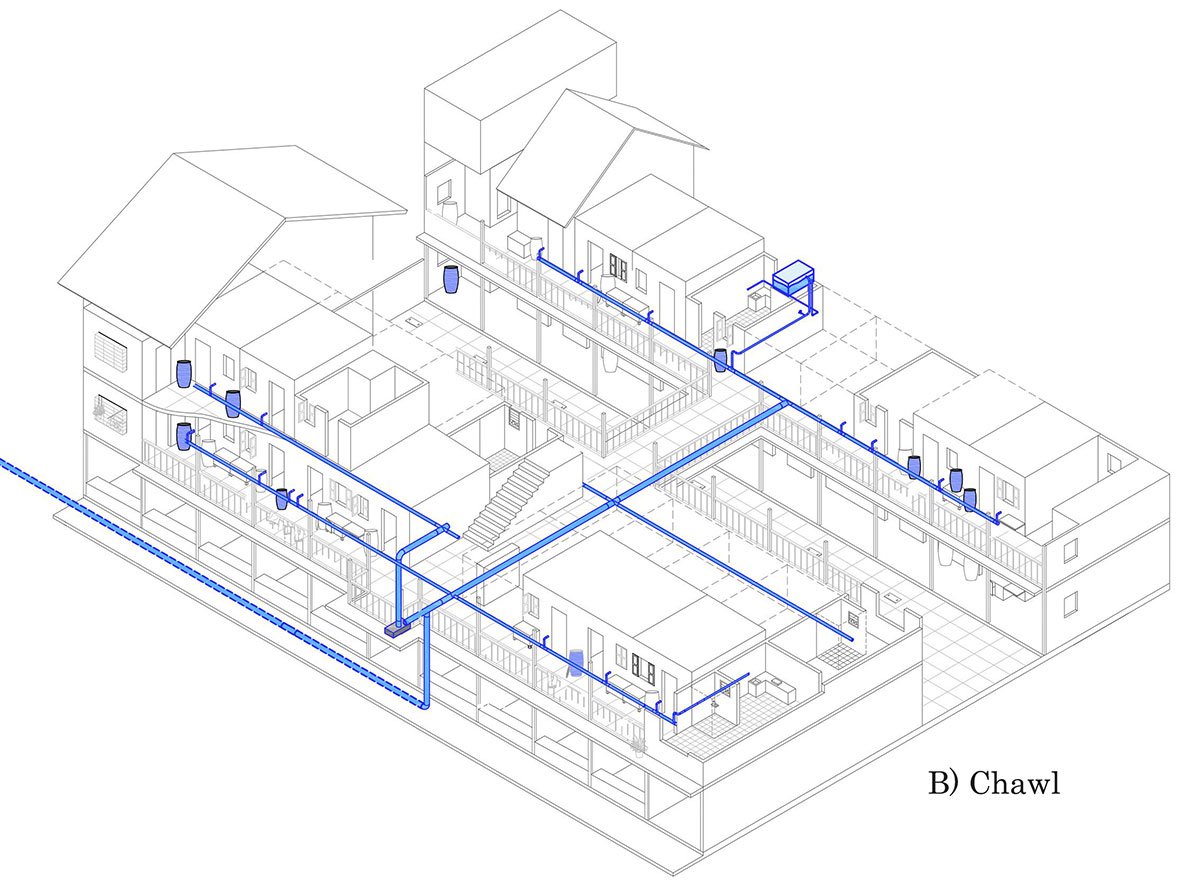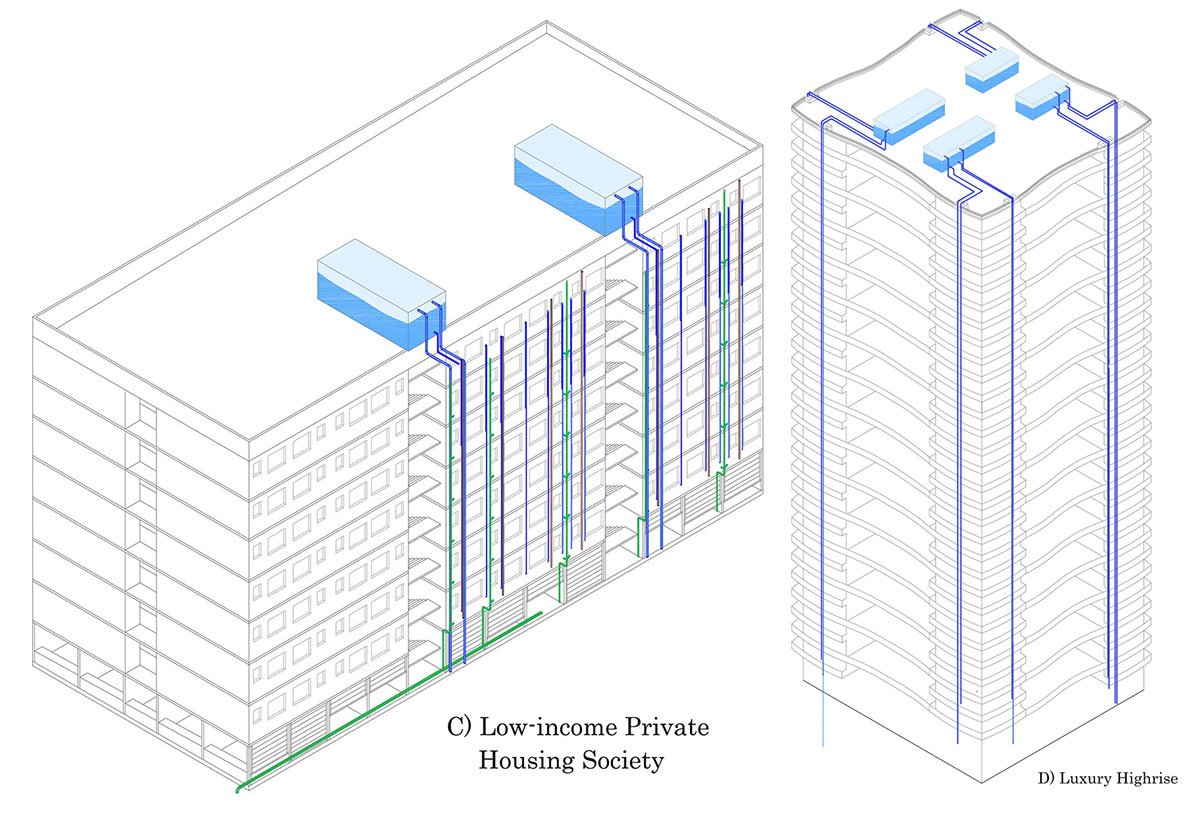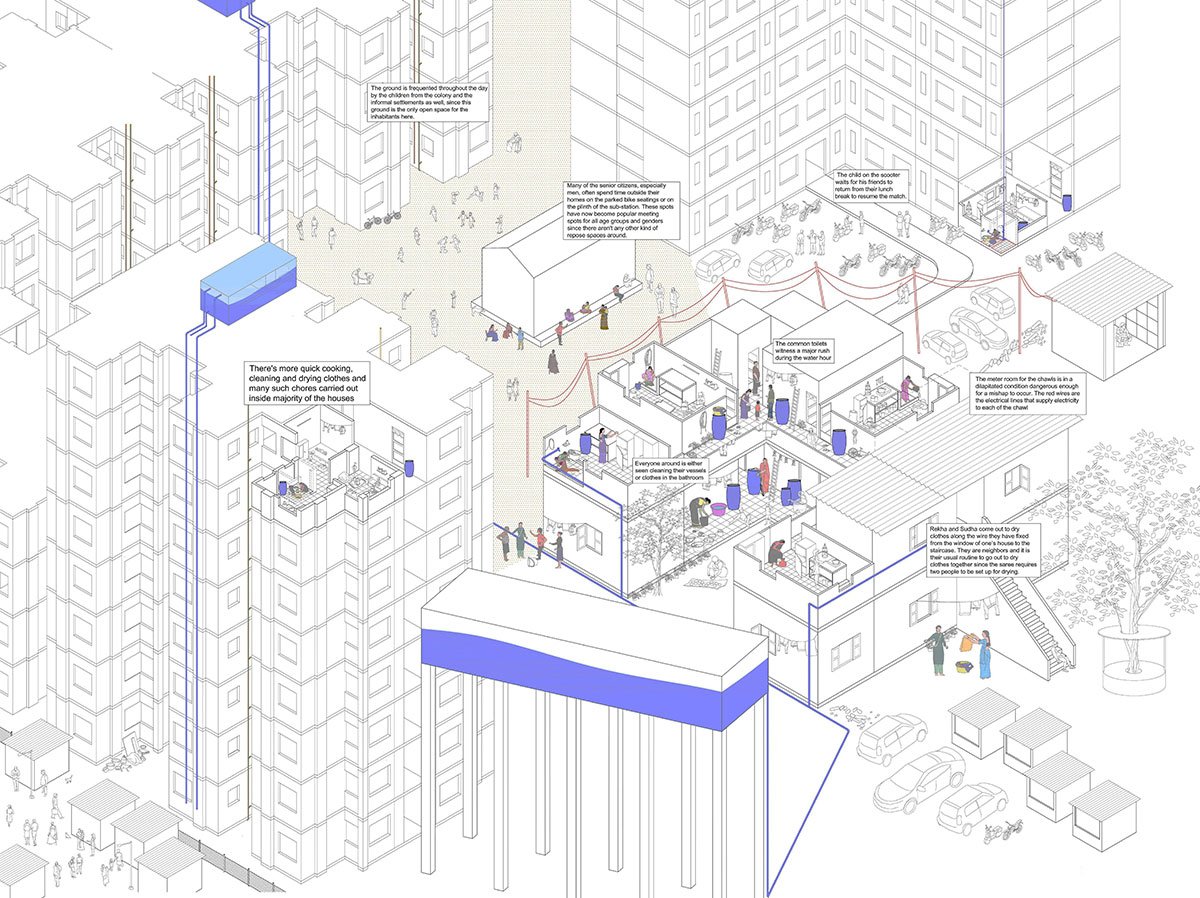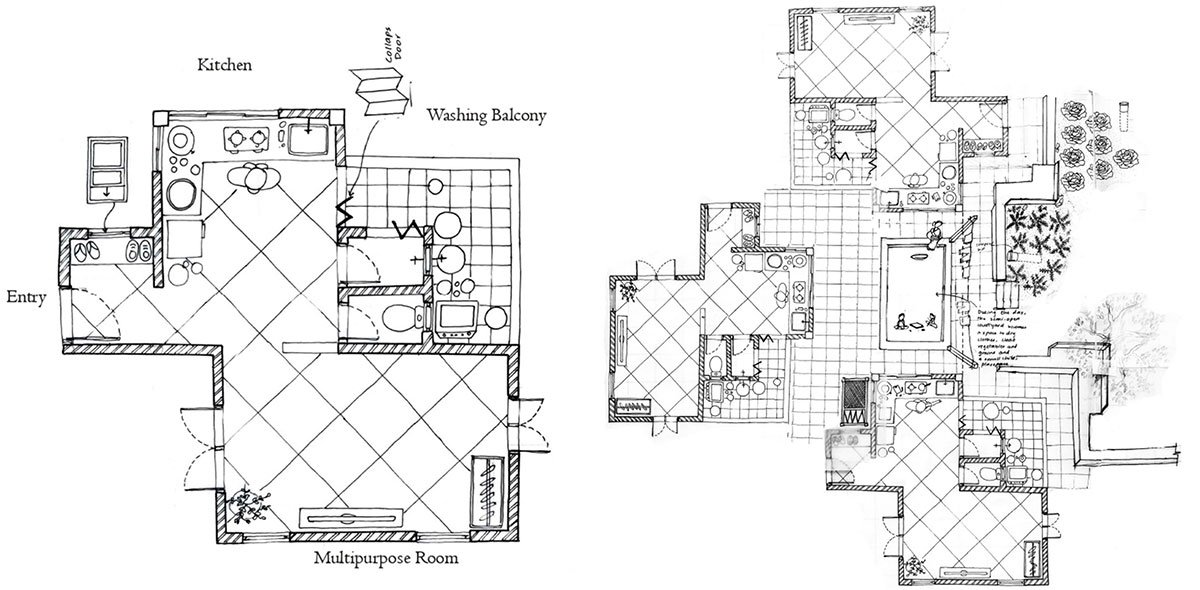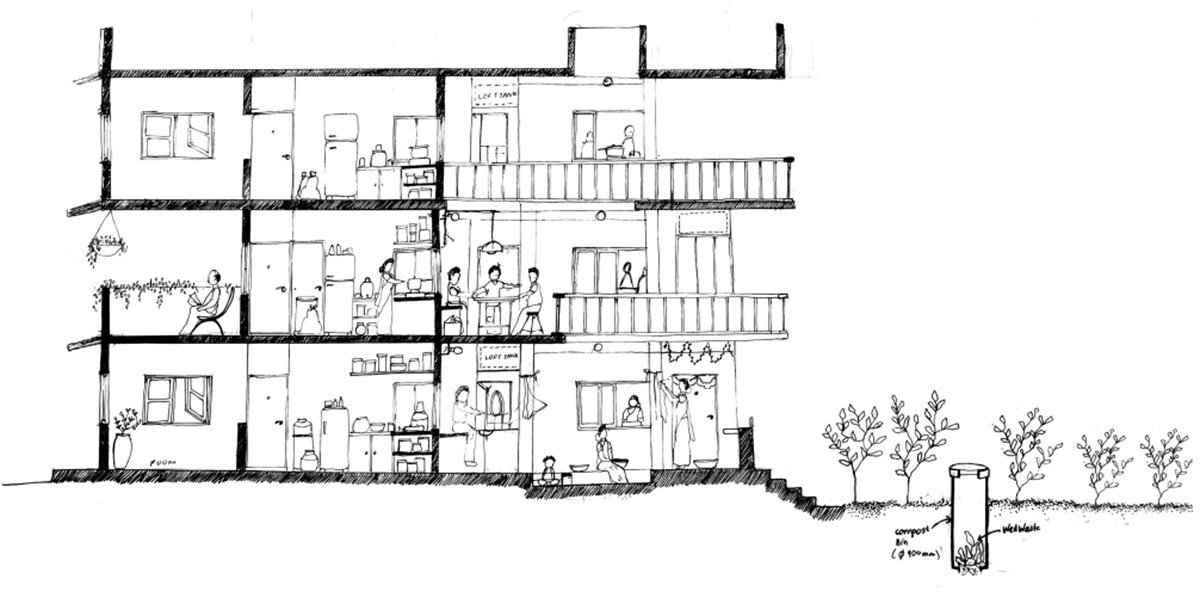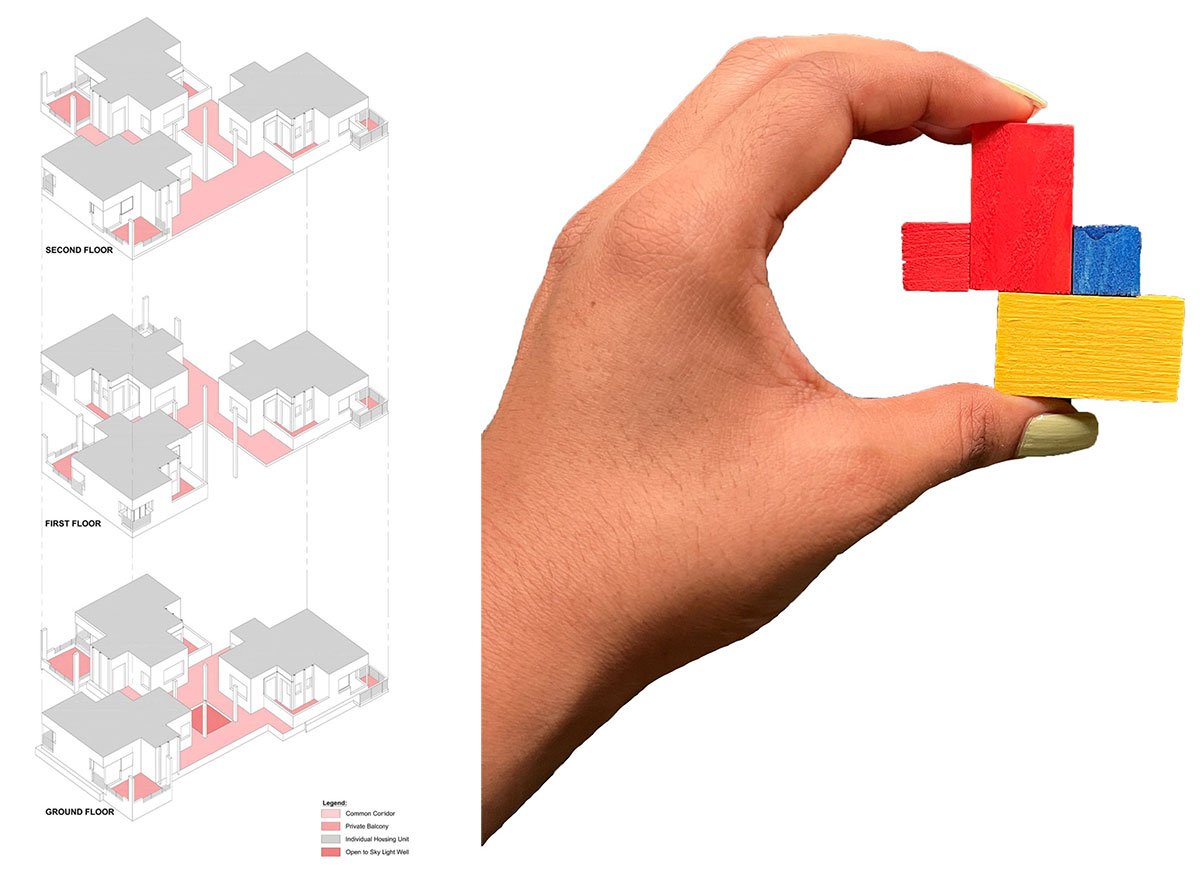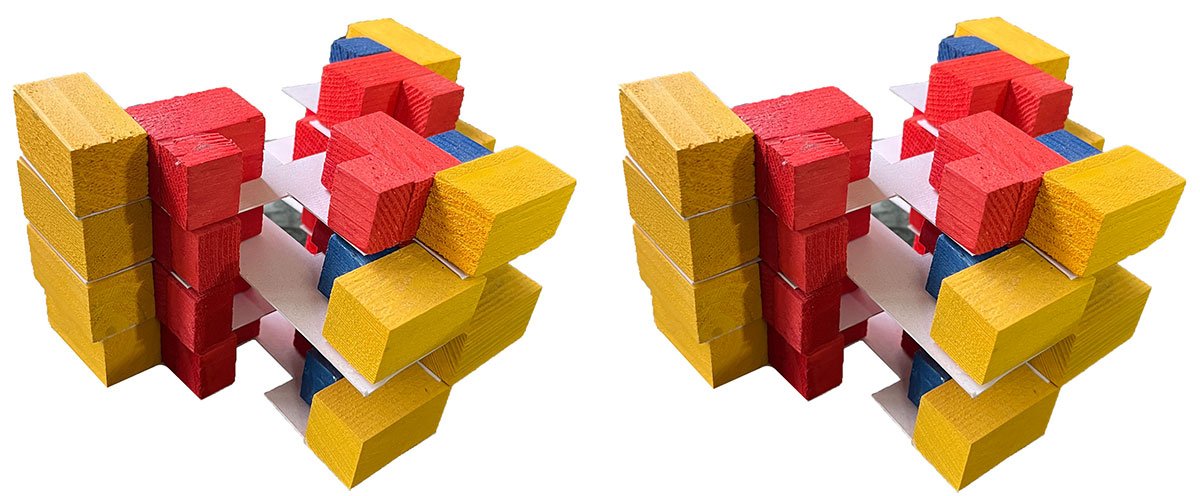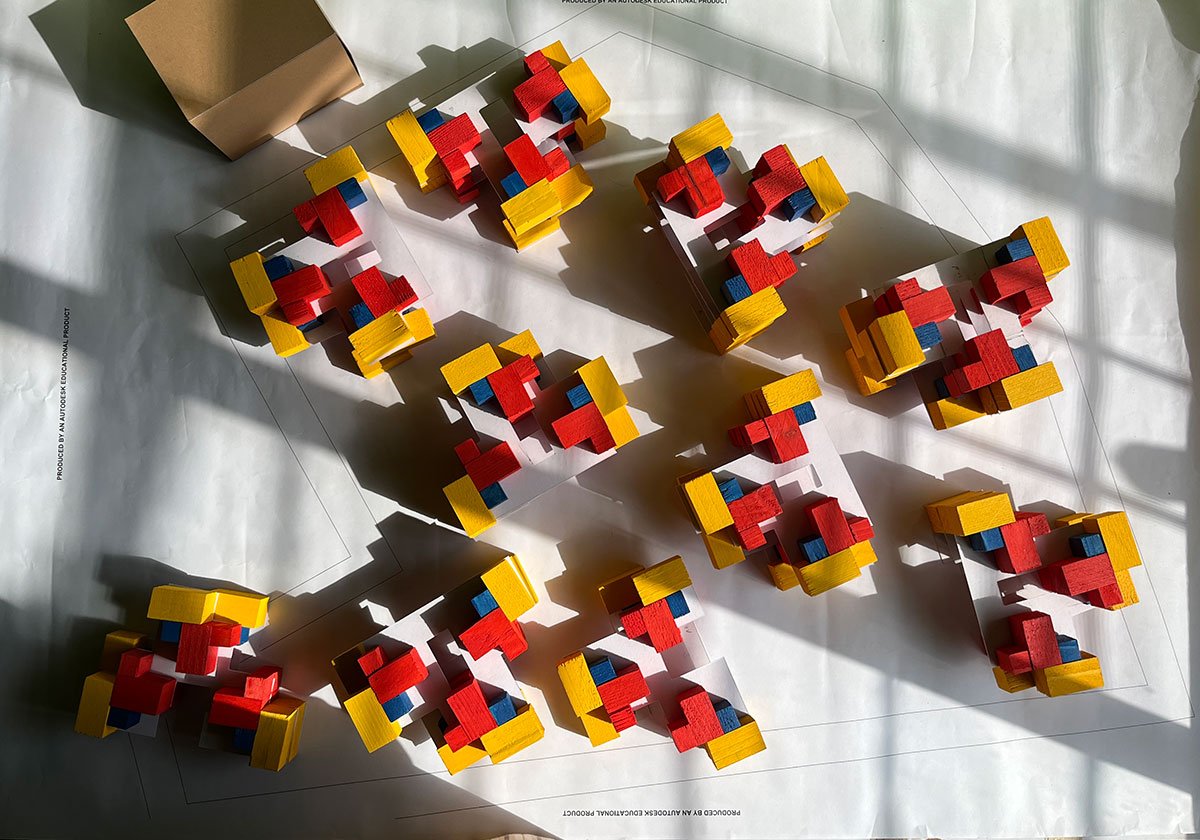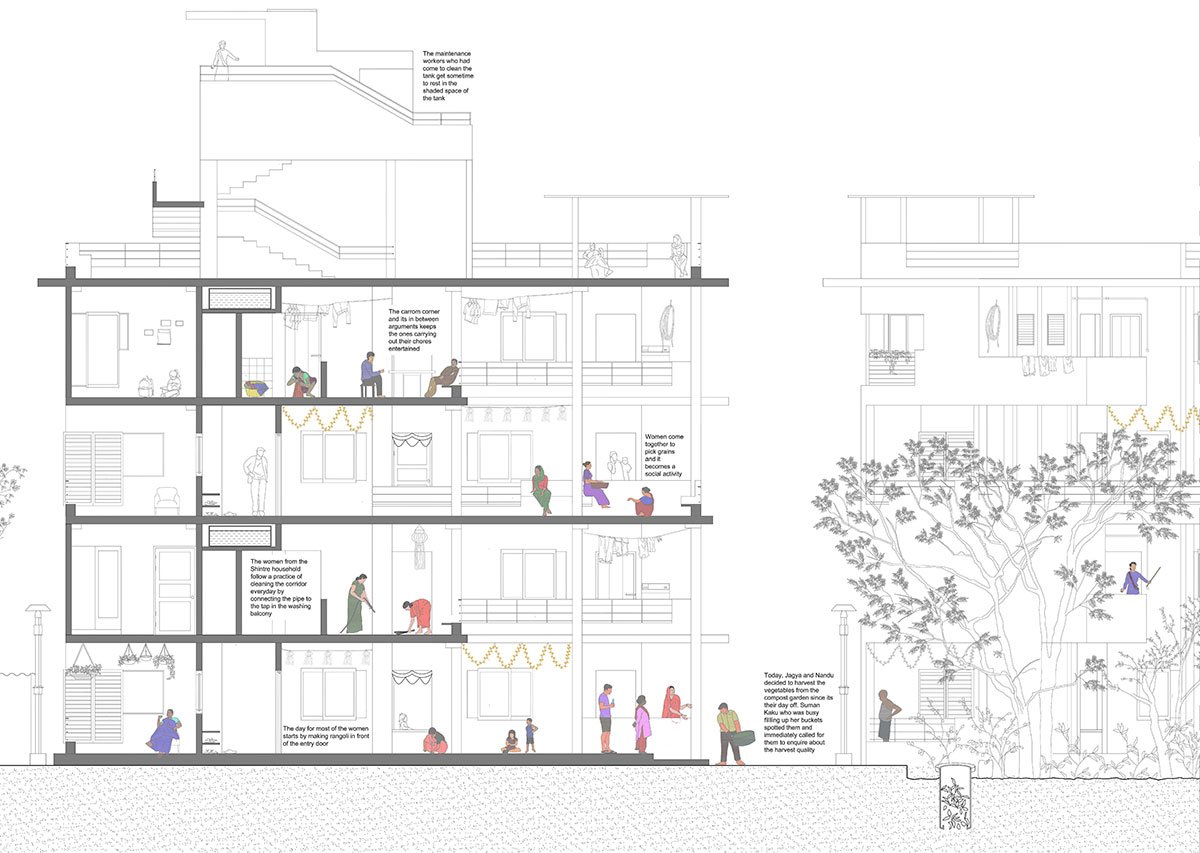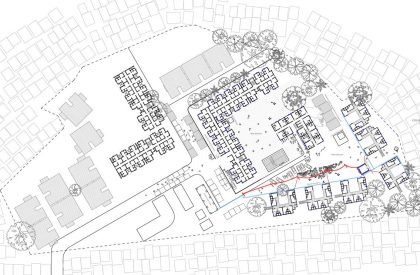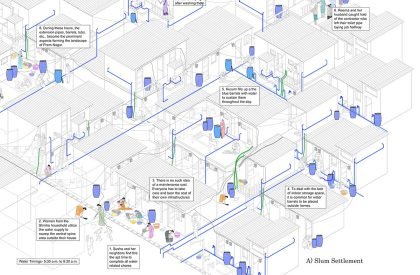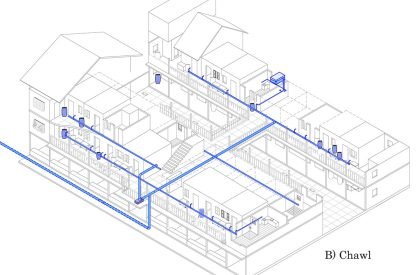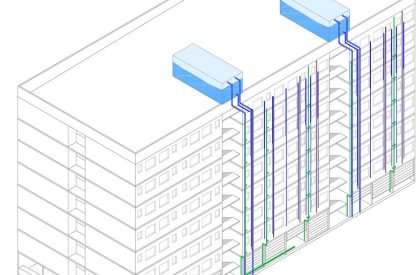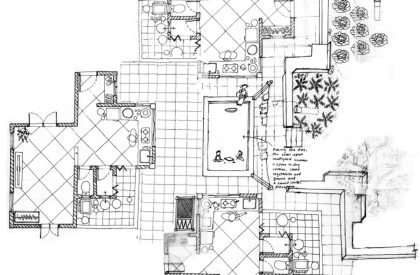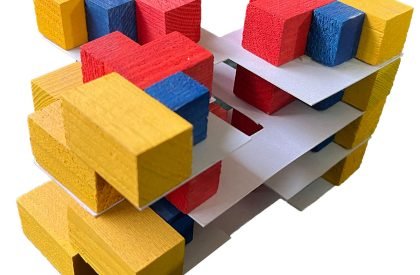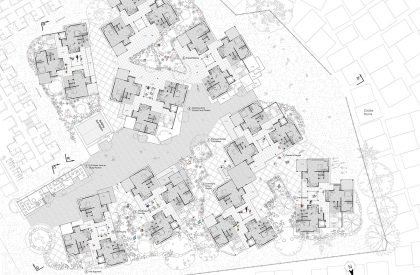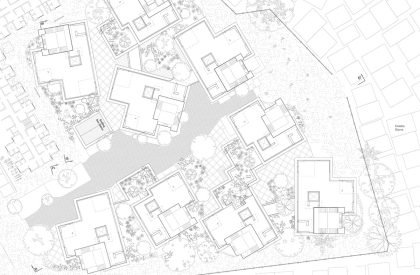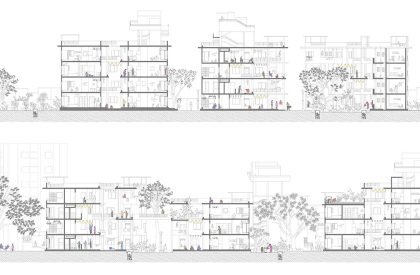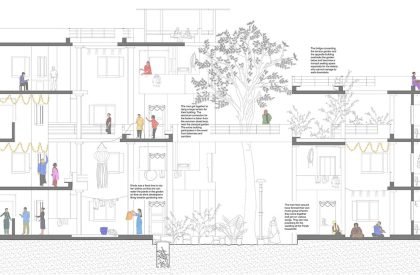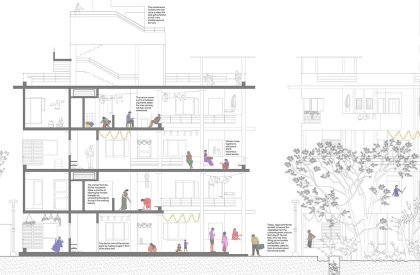Excerpt: ‘Re-Imagining Housing through Everyday Infrastructures’ is an architecture thesis by Neha Dalvi from the ‘School of Environment and Architecture (SEA)’ that reimagines mass housing as a framework for social connection, dignity in labor, and equitable access to infrastructure. It shifts focus from passive leisure to active care through elements like service courtyards, washing balconies, and shared compost gardens. This challenges conventional housing models and proposes a more inclusive, democratic, and sustainable way of living.
Project Description
[Text as submitted by architect] In today’s world, the highest standards of sustainability and technological progress in residential architecture are often gauged by the building’s infrastructure—particularly in areas like rainwater harvesting, electricity management, and composting for waste. These systems are widely celebrated for their ability to maximize space and streamline services, making daily life more efficient. As a result, efficiency and sustainability have become key marketing tools, appealing to people across different socioeconomic groups by promising an improved lifestyle.
However, these advancements are largely shaped by the perspective of developers, who often treat such systems merely as tools for efficiency. They tend to tuck them away in corners or hidden areas, requiring separate upkeep and often ignoring their broader social impact. This efficiency-focused approach primarily serves those who can afford the cost of maintenance. When similar systems are implemented in low-income housing, they often disrupt existing social dynamics and are prone to failure due to financial constraints.
This thesis proposes a model for cooperative housing tailored to low-income communities—one that merges technology with social cohesion to create inclusive, democratic living environments. By simply rethinking the placement and role of infrastructure, we can challenge everyday societal norms and expose the underlying issues of class and inequality.
Save
